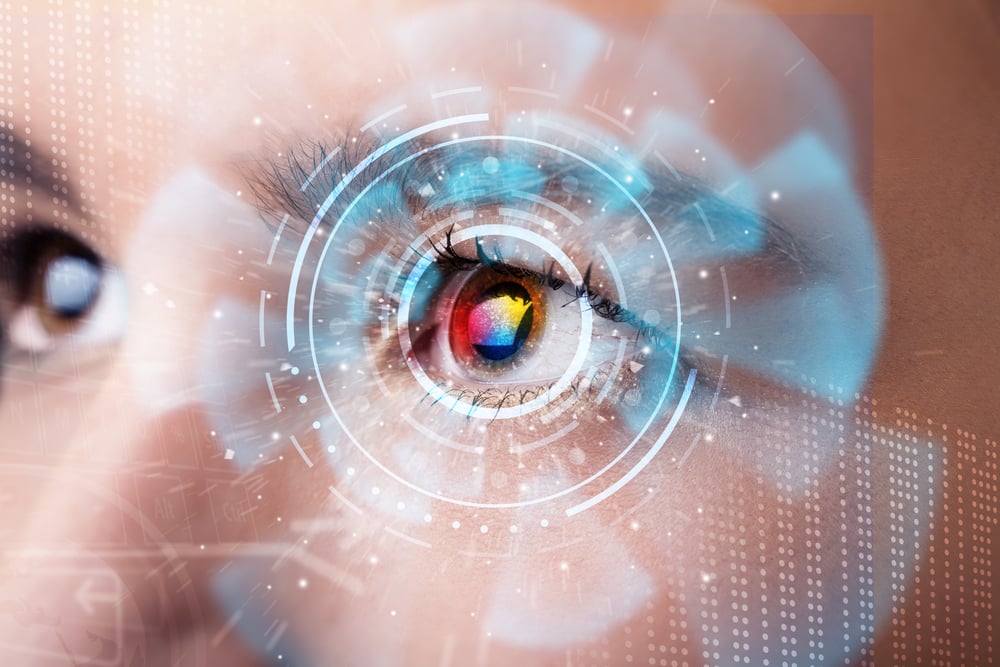Old-school systems & their conventional bulbs have long been a staple in our everyday lives, illuminating our homes, offices, and public spaces.
Despite their widespread use, these conventional solutions come with their fair share of challenges, especially in terms of their inefficiency, which not only drains energy resources but also puts a strain on our wallets.
Thankfully, a better solution lies in the form of LEDs. They're simply a game-changer in the lighting industry, offering a host of advantages and uses that make it a superior choice.
So, let's explore the benefits of LED lighting that make it a compelling choice, revolutionizing the way we illuminate our world.
Why are LED lights better?
The main reason why LED lights are better is because of their remarkable energy efficiency and longevity. LED technology converts a significantly higher percentage of electrical energy into visible light, resulting in less wasted energy and lower electricity bills. Furthermore, LEDs have a long lifespan, outlasting traditional light options.
However, efficiency and longevity are just the beginning.
We'll delve deeper into the multitude of benefits offered by LEDs. From enhanced environmental sustainability to superior durability, there are some seriously compelling reasons why they're the optimal choice for illuminating our world.
So, what are the benefits of LED lighting?
With their exceptional energy efficiency, long lifespan, and cost savings, LEDs aren't just environmentally friendly but also reduce maintenance expenses. Their durability, instant illumination, and design flexibility provide added benefits, while directional illumination, color options, and enhanced safety complete the list of benefits.
Although you should be aware of all the pros and cons of LED lights, let's focus on the stand-out benefits...
Energy efficiency
Unlike traditional options, such as incandescent or fluorescent bulbs, LEDs operate with remarkable efficiency, which translates into reduced electricity consumption.
In commercial settings, where lights represent a significant portion of energy usage, the switch to LEDs can lead to substantial cost reductions and a lower carbon footprint.
Additional reading: types of commercial lighting
Why are LED lights more efficient?
OK, so we know that they're more efficient, but why are LED lights more efficient than traditional options?
Simply, they convert a significantly higher percentage of electrical energy into visible light, wasting less energy as heat. And they do this through their unique semiconductor-based design.
They use a process called electroluminescence, which emits light when an electric current passes through the semiconductor material.
This direct conversion of electrical energy into light is highly efficient compared to traditional technologies, which rely on heating a filament or exciting gas molecules.

Cost savings
LEDs offer long-term financial benefits that arise from their efficiency, durability, and reduced maintenance requirements.
They can typically achieve energy savings of 50% to 80% or more compared to a traditional incandescent bulb or a fluorescent light bulb, leading to substantial cost reductions.
Additionally, another advantage of LED lights is their long lifespan, often lasting tens of thousands of hours. This longevity eliminates the frequent need for replacements, reducing maintenance and replacement costs.
In contrast, traditional bulbs may require you to replace them more frequently due to shorter lifespans, resulting in additional expenses for purchasing and installing new bulbs.
In terms of savings through enhanced durability, LEDs are constructed with solid-state components, making them more resistant to shocks, vibrations, and external impacts compared to fragile incandescent or fluorescent bulbs.
Such durability minimizes the risk of breakage or damage during handling, transportation, or accidental impacts, reducing the need for replacements and associated costs.
Higher sales
Reducing operating expenses is critical for small businesses, but so is increasing revenue.
There's no doubt that better lighting boosts retail sales. Now that BOPIS (buy online, pickup in store) models are the norm, it’s more important than ever to make your business easy to spot and a safe place to pick up.
LED light benefits for health
So, why are LED lights better for health?
Firstly, an LED solution emits a type of light that closely resembles natural daylight. This is beneficial for our circadian rhythm—the internal clock that regulates our sleep-wake cycle.
Exposure to bright, blue-rich light during the day helps to enhance alertness, productivity, and mood. LEDs provide this balanced spectrum, promoting a healthier sleep-wake cycle and overall well-being.
Secondly, LEDs don't emit harmful ultraviolet (UV) radiation, unlike some other light sources. Prolonged exposure to UV radiation can lead to skin damage and an increased risk of skin cancer.
In addition, you can minimize exposure to UV rays and create a safer environment via LEDs, especially in settings where lights are in close proximity to occupants, such as offices, schools, and healthcare facilities.
Moreover, LED solutions are free from flickering, which can cause eye problems. Unlike traditional fluorescent lights that may flicker at a frequency imperceptible to the human eye, LEDs provide consistent and stable illumination. This reduces the potential for visual discomfort, headaches, and other negative effects associated with flickering lights.
Finally, they're dimmable and you can control them more effectively compared to traditional options. This allows for personalized light levels and ambient adjustments, which can positively impact mood, concentration, and comfort.
There's clearly a strong argument for LEDs but also against the negative effects of fluorescent lights.
Flicker-free illumination
One of the notable LED lighting benefits is its ability to provide instant and flicker-free illumination, enhancing both their visual comfort and overall functionality in various settings.
 LEDs achieve flicker-free operation due to their unique electronic driver technology, which has precise control over the electrical current flowing through the diode, ensuring a constant and stable light output.
LEDs achieve flicker-free operation due to their unique electronic driver technology, which has precise control over the electrical current flowing through the diode, ensuring a constant and stable light output.
Unlike some old-school options, such as fluorescent lights, which may take a few moments to reach full brightness, LEDs get to their maximum brightness instantly.
As soon as they're switched on, LEDs emit full illumination, eliminating any delay or warm-up period. This instant illumination is particularly advantageous in environments where immediate lighting is crucial, such as in emergency situations or areas requiring rapid response times.
In addition to the eye-health benefits we mentioned above, the flicker-free factor ensures a comfortable and visually pleasing experience, contributing to improved general productivity and wellbeing.
The absence of flickering also makes them compatible for applications that require high-quality compact lights, such as photography, videography, and visual inspections, which need precise and accurate illumination without any distortion caused by flickering light sources.
A more environmentally friendly solution
When it comes to the benefits of LEDs in terms of environmental impact, several key factors come into play.
Firstly, their reduced energy consumption translates into lower demand for electricity generation, ultimately leading to decreased greenhouse gas emissions and a smaller carbon footprint.
In fact, LED lighting technology reduced carbon emissions by close to 600 million tons in just one year.
By choosing LED lights, we can all actively contribute to mitigating climate change and promoting a greener future.
 Furthermore, they don't contain harmful substances like mercury, which is commonly found in fluorescent bulbs and is a hazardous material that poses risks to human health and the environment.
Furthermore, they don't contain harmful substances like mercury, which is commonly found in fluorescent bulbs and is a hazardous material that poses risks to human health and the environment.
By eliminating mercury from lights, LED lights reduce the potential for environmental contamination and ensure safer disposal at the end of their lifespan.
Making sustainable choices like switching to LEDs can also make your business eligible for many of the energy efficiency grants for businesses that are available. By helping the environment, you can also help your bottom line!
Additionally, thanks to LED options having a longer operational lifespan compared to traditional options, fewer bulbs need to be manufactured and disposed of, resulting in reduced waste production. We're talking an average lifespan of 50,000 hours versus under 1,000 for incandescent bulbs!
Their durability also contributes to their environmental friendliness since they're constructed from robust materials that are resistant to breakage, making them less prone to damage during handling, transportation, or installation.
This durability extends the lifespan of LED lights, reducing waste generation and conserving resources.
Design flexibility
The unique characteristics of LED lights allow for creative and customizable designs that can transform spaces and enhance aesthetics, even in commercial environments.
One of the key aspects of design flexibility with LEDs are theirs compact size—the chips are small and can be easily integrated into various fixtures, luminaires, or even unconventional designs.
This compact size allows for sleek and minimalist fixtures that can blend seamlessly with different architectural styles and interior designs. They can be discreetly incorporated into recessed fixtures, track systems, or even used for accent lights to highlight specific architectural features or artworks.
Moreover, they can be arranged in various configurations, allowing for innovative designs and patterns.
Whether it's creating geometric arrangements, linear systems, or dynamic shapes, the versatility of LEDs enables you to explore unique installations that suit your vision and purpose.
Directional lighting
Unlike traditional options that emit light in all directions, such as a halogen lamp, LED lights can be designed to direct light precisely where it's needed.
This is possible through their inherent design and optical characteristics, such as optics or reflectors that help shape and control the light output through specific beam angles—ranging from narrow spotlights to wide floodlights.
One of the added bonuses of this flexibility is the enhancement of task lights, where concentrated illumination is essential, improving visibility, reducing shadows, and enabling task performance with greater accuracy and comfort.
Directional illumination also minimizes light wastage. By focusing light in specific directions, LEDs ensure light is directed only where needed, avoiding unnecessary illumination of surrounding areas. This efficient light distribution results in reduced energy consumption and improved overall efficiency.
An often overlooked benefit of directional lights is for effective outdoor applications, illuminating pathways, signage, landscape features, or building facades with precision and control.
Wide range of color options
LEDs are available in various color temperatures, which determine the perceived warmth or coolness of the light. The color temperature is measured in Kelvin (K) and ranges from warm white (around 2700K to 3000K) to cool white or daylight (5000K and above).
This range allows users to select the desired color temperature to match the intended space ambiance or functionality, for example:
- Warm: Creates a cozy and inviting atmosphere, often used in residential or hospitality settings
- Cooler: Suitable for areas requiring bright and focused illumination, such as offices or retail spaces.
On top of this, RGB (red, green, blue), RGBW (includes white), and RGBA (includes amber) LEDs allow for a mix of intensities of red, green, and blue light to create a virtually unlimited palette of colors for vibrant and dynamic effects, adding visual interest and impact to various applications.
The wide range of color options allows for exceptional customization and personalization of designs, creating different moods, dramatic effects, or alignment with brand themes in commercial spaces.
Enhanced safety
In additional to the health benefits we've discussed, LEDs emit significantly less heat compared to regular lights like incandescent bulbs.
The heat generated by traditional bulbs can pose a fire hazard, especially in enclosed spaces or when lights are in close proximity to flammable materials.
In contrast, LEDs remain relatively cool, reducing the risk of accidental fires and burns.
Furthermore, LED lights are built with sturdy materials and solid-state components, making them more resistant to breakage and damage compared to fragile incandescent or fluorescent bulbs.
This durability reduces the risk of injury from shattered glass or exposure to hazardous materials in case of accidental impacts or mishandling.
Parking structures are often overlooked by businesses as a significant source of hidden cost savings safety, and using long-lasting LEDs means your parking area is consistently well lit.
What are LED lights used for in the business world?
Commercial LED lighting has transformed the way these businesses and sectors illuminate their spaces:
- Retail plazas & stores
- Restaurants
- Car dealerships
- Classrooms
- Prisons/Correctional facilities
- Warehouses
- Residential
- Hospitality & Hotels
- Hospitals
- Factories
- Early learning
Aside from the impressive benefits, the fact that these industries/settings are all taking up LED solutions answers the question of are LED lights good or not on its own.
Their versatility and advantages clearly make them a preferred choice for businesses seeking optimal illumination, energy savings, and improved visual environments.
Why use LED lights in your business?
When it comes to using LED lights, there are numerous LED benefits that go beyond what we've already covered.
Not only do they provide energy efficiency, cost savings, and enhanced experiences but also present an opportunity to partner with a leading Lighting as a Service (LaaS) provider like Future Energy Solutions.
By choosing FES as your partner, you gain access to our expertise in designing, installing, and maintaining an LED system—we have a unique LED Lighting as a Service model, providing you with a hassle-free experience where we take care of the entire infrastructure while you focus on your core business operations.
Contact us today to learn more about our innovative solutions and how they can help you harness the full potential of LEDs while driving operational efficiency and cost savings.
Don’t be left in the dark on the advantages of LED lights
The advantages of LED lighting are evident across various industries, making them a superior choice for businesses seeking efficient, cost-effective, and sustainable solutions.
LEDs contribute to substantial cost savings, improved safety, and a greener environment, making them a smart investment for businesses of all sizes.
Are LED lightbulbs better, really? Yes, they are!
With their exceptional performance and giving you the opportunity to partner with the team here at FES, you'll unlock their full potential without the burdens of project management and maintenance concerns.
Businesses just like yours are converting to LED lighting at record rates, with the LED market expected to reach $18.54 billion by 2028, growing at a CAGR rate of 9.58% between 2023 and 2028.
Thinking about making the switch? Read this Complete Commercial Guide to LED Lighting.
FAQs
What purpose does the light emitting diode serve?
The purpose of the light emitting diode is to convert electrical energy into visible light. Its unique semiconductor design enables efficient light emission, making it a popular choice for various applications, such as commercial/residential, display screens, automotive, traffic signals, backlighting & street lighting.
Are LED lights better than regular lights?
To explain the benefits of LED bulbs over the previous types of bulbs, LEDs are indeed better. They offer higher energy efficiency, longer lifespan, reduced maintenance, and a wide range of color options, making them a superior choice for cost savings, environmental impact, and enhanced experiences.



%20(1).png?width=1080&height=1080&name=FES-Ebook-1%20(1)%20(1).png)